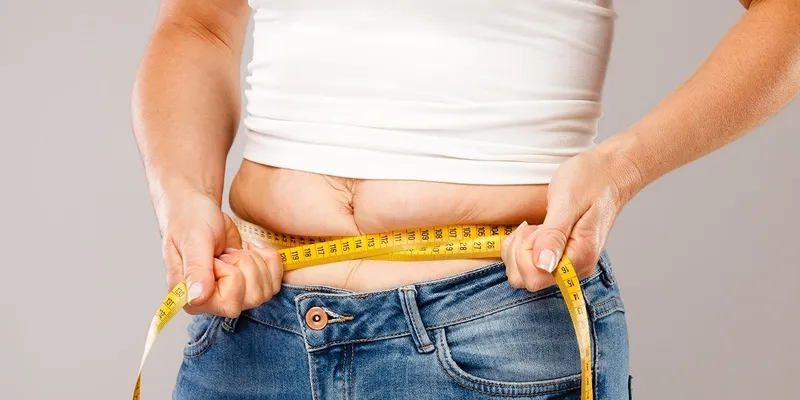It may seem that on this occasion, we are talking about building muscle and the simultaneous loss of fat, its really not difficult. Proper diet and balanced nutrition, a routine of organized workouts, and proper rest and recovery will uncover a lean muscular body and better health. In this guide, you will not only learn about the science of plant-based nutrition but also key strategies and actionable steps you can take towards your goal.
Why Combine Muscle Gain and Fat Loss?
 The skeletomuscular system does not only give one a muscular look and solidity but also increases one's metabolic rate hence increasing calorie requirement even while one is in a state of rest. Fat loss on the other hand unveils muscle structures and is healthier because the body reduces risks related to high body fat such as cardiovascular diseases. Achieving these goals simultaneously results in a complete fitness makeover.
The skeletomuscular system does not only give one a muscular look and solidity but also increases one's metabolic rate hence increasing calorie requirement even while one is in a state of rest. Fat loss on the other hand unveils muscle structures and is healthier because the body reduces risks related to high body fat such as cardiovascular diseases. Achieving these goals simultaneously results in a complete fitness makeover.
Although the feature of gaining muscle mass takes place with the caloric excess that fat loss occurs with the caloric deficiency, it is possible to use them at the same time. The issue is to find the right amount of energy intake, meal frequency, and training volume.
The Science Behind Muscle Gain and Fat Loss
To achieve both goals, your body needs proper nutrition, consistent exercise, and adequate recovery. Heres how each factor works:
- Calorie Partitioning: Your body utilizes calories from food to fuel workouts, repair muscle tissue, and maintain essential functions. Managing your calorie intake helps direct energy toward muscle-building while minimizing fat storage.
- Protein Synthesis: Building muscle relies on protein synthesis, a process that repairs and grows muscle fibers after resistance training. Adequate protein intake is essential to sustain this process.
- Energy Deficit for Fat Loss: To burn fat, your body needs to be in a slight calorie deficit, using stored fat as energy.
By managing these processes effectively, you can simultaneously gain muscle and lose fat.
Nutrition Tips for Muscle Gain and Fat Loss
Are you looking to achieve both muscle gain and fat loss? Here are some powerful nutrition tips that can help you on your journey to a stronger, leaner physique. By incorporating these strategies into your diet, you can optimize your nutrition for maximum results.
1. Make Protein the Foundation of Your Diet
Protein is the cornerstone of muscle-building and fat loss. It repairs damaged muscle fibers, promotes growth, and helps you stay full, reducing the chances of overeating. Aim for 1.2 to 2.2 grams of protein per kilogram of body weight daily. Choose high-quality sources like:
- Lean meats (chicken, turkey, beef)
- Fish (salmon, tuna)
- Eggs and dairy (yogurt, cheese)
- Plant-based options (tofu, lentils, beans)
2. Balance Your Macronutrients
While protein is vital, carbohydrates and fats play critical roles as well.
- Carbohydrates provide energy for intense workouts. Focus on complex carbs like whole grains, sweet potatoes, oats, and quinoa to sustain energy levels.
- Healthy Fats are essential for hormone production and overall health. Include sources like avocados, nuts, seeds, and olive oil in your diet.
3. Maintain a Controlled Calorie Deficit
To shed fat without sacrificing muscle, create a small calorie deficit. A reduction of 300500 calories per day is enough to promote fat loss while providing enough energy to build muscle.
4. Use Nutrient Timing
Timing your meals strategically enhances results. For example:
- Pre-Workout: Consume carbs and protein to fuel your workout.
- Post-Workout: Have a meal rich in protein and carbs to replenish glycogen stores and support muscle recovery.
5. Stay Consistent With Portion Sizes
Even nutritious foods can hinder fat loss if consumed in large quantities. Use portion control to ensure you stay within your calorie target.
The Role of Strength Training in Your Goals
Strength training is the most effective way to build muscle while maintaining a calorie deficit. It helps preserve muscle mass, increases strength, and improves overall body composition.
1. Prioritize Compound Exercises
Compound movements, such as squats, deadlifts, bench presses, and pull-ups, work multiple muscle groups simultaneously. They provide the best stimulus for muscle growth and maximize calorie burn.
2. Implement Progressive Overload
To build muscle, gradually increase the weight, repetitions, or intensity of your workouts over time. This ensures your muscles are continually challenged and forced to grow stronger.
3. Train All Major Muscle Groups
Create a balanced workout routine that targets all major muscle groups: legs, chest, back, shoulders, and arms. A balanced physique is not only visually appealing but also functional.
4. Schedule Regular Training Sessions
Aim for at least three to four strength training sessions per week. This frequency allows enough time for muscle recovery while ensuring consistent progress.
Incorporating Cardio for Fat Loss
Cardiovascular exercise is essential for burning calories and accelerating fat loss. However, its important to find a balance so you dont hinder muscle growth.
1. Try High-Intensity Interval Training (HIIT)
HIIT alternates between short bursts of intense activity and rest. For example, sprint for 30 seconds, then walk for 60 seconds. Repeat this cycle for 2030 minutes. HIIT is effective for burning calories and preserving muscle.
2. Include Steady-State Cardio
Low-intensity steady-state (LISS) cardio, such as walking or cycling, is less taxing on your body and complements your strength training routine.
3. Limit Excessive Cardio
Too much cardio can lead to muscle loss. Stick to two or three sessions per week, each lasting 2040 minutes.
Avoiding Common Mistakes
 When achieving fitness goals, it's essential to avoid common mistakes that can hinder your progress. Let's explore some key pitfalls to watch out for and ensure you stay on track toward success.
When achieving fitness goals, it's essential to avoid common mistakes that can hinder your progress. Let's explore some key pitfalls to watch out for and ensure you stay on track toward success.
- Relying on Crash Diets- Extreme calorie restriction may lead to quick fat loss but will also cause muscle loss and fatigue. A gradual approach is more sustainable and effective.
- Neglecting Strength Training- Skipping resistance workouts while dieting can lead to muscle loss, slowing your metabolism and progress.
- Ignoring Recovery- Recovery is as important as your workouts. Overtraining without rest leads to burnout and injury, hindering results.
Conclusion
Gaining muscle and eliminating fat simultaneously is not only achievable but also highly rewarding. You can reach your fitness goals efficiently by following a structured approach to nutrition, strength training, and recovery. Focus on eating high-protein meals, incorporating compound exercises, and maintaining an active lifestyle. Be consistent, track your progress, and adapt as needed. With patience and dedication, youll transform your body, enhance your health, and feel stronger than ever.







